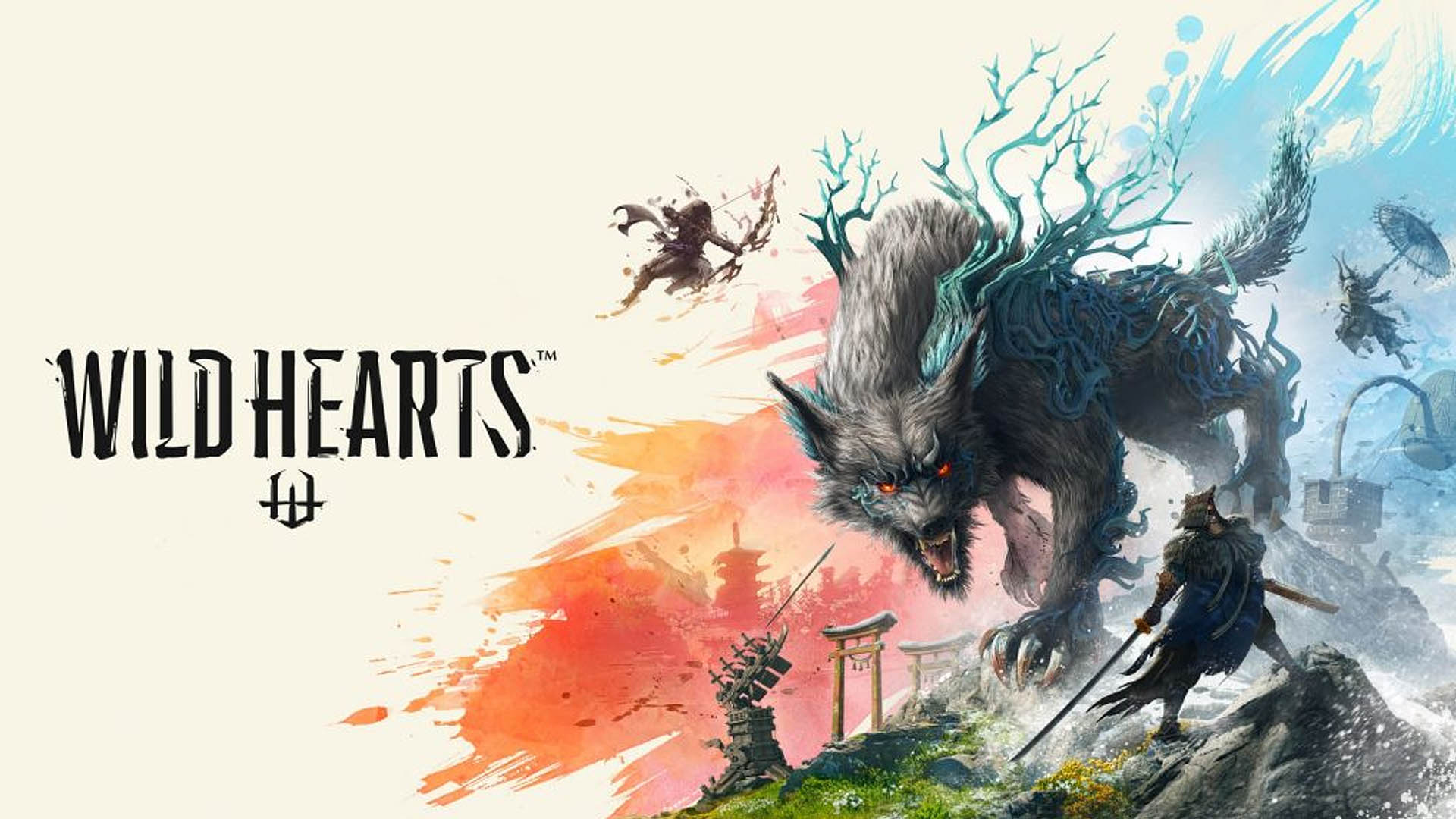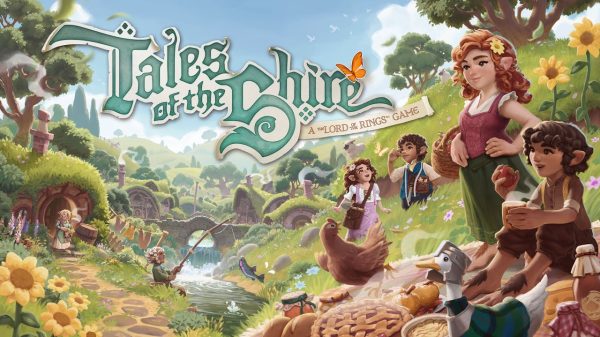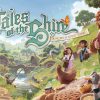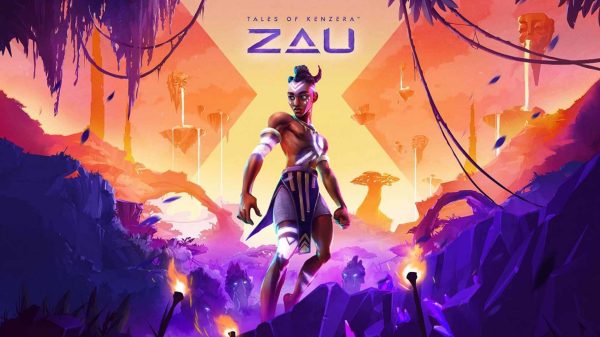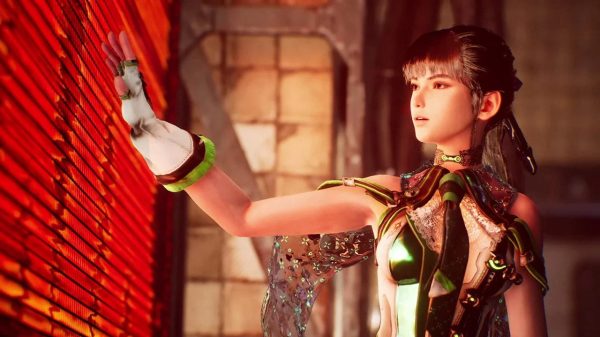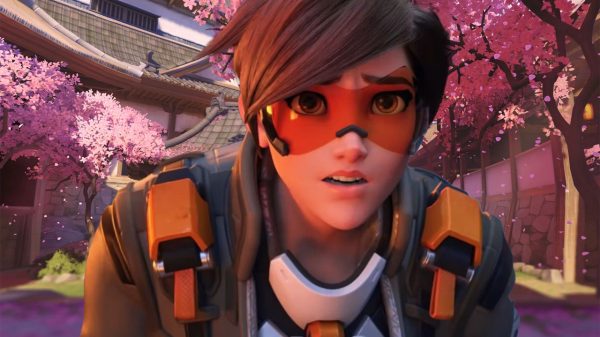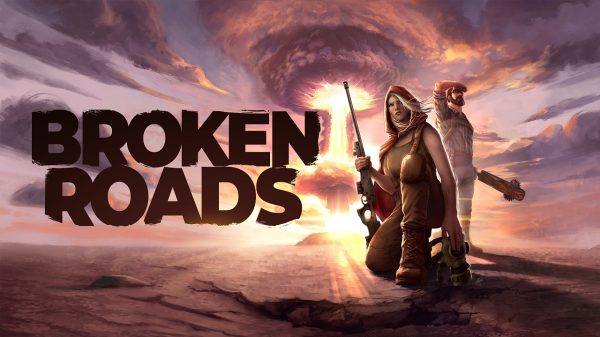Wild Hearts makes its most confident and exciting mark on the monster hunting genre in its opening minutes. An anonymous hunter stalks an idyllic Japanese-inspired countryside, tracking their prey through the overgrowth and shaded woods. Eventually, hunter and mark share the same space as you find a beautiful animal grazing in a field, oblivious to your presence. Press O to crouch and approach unnoticed, the game prompts, but upon coming within striking distance of your prey, Wild Hearts pivots. Press the right trigger to slay the hunt, press the left…to pet it. A small but massively consequential moment in which the game makes it abundantly clear that the way in which you interact with its world is going to be something new.
This is just one of the many ways Wild Hearts successfully differentiates itself from the well-established genre. Koei Tecmo’s Omega Force studio cut its teeth on monster hunting with the Toukiden series, a 2013 reach for the throne Capcom had nestled itself upon. It was a modest success but the dominance of Omega Force’s crown jewel, the Dynasty Warriors games, made a deeper exploration of the concept a hard pitch. Somewhat surprisingly, enter EA Originals, the experimental publishing arm of the industry giant. This international crossover has produced Wild Hearts, a refreshingly playful and warmly familiar take on third-person, monster-focused action.
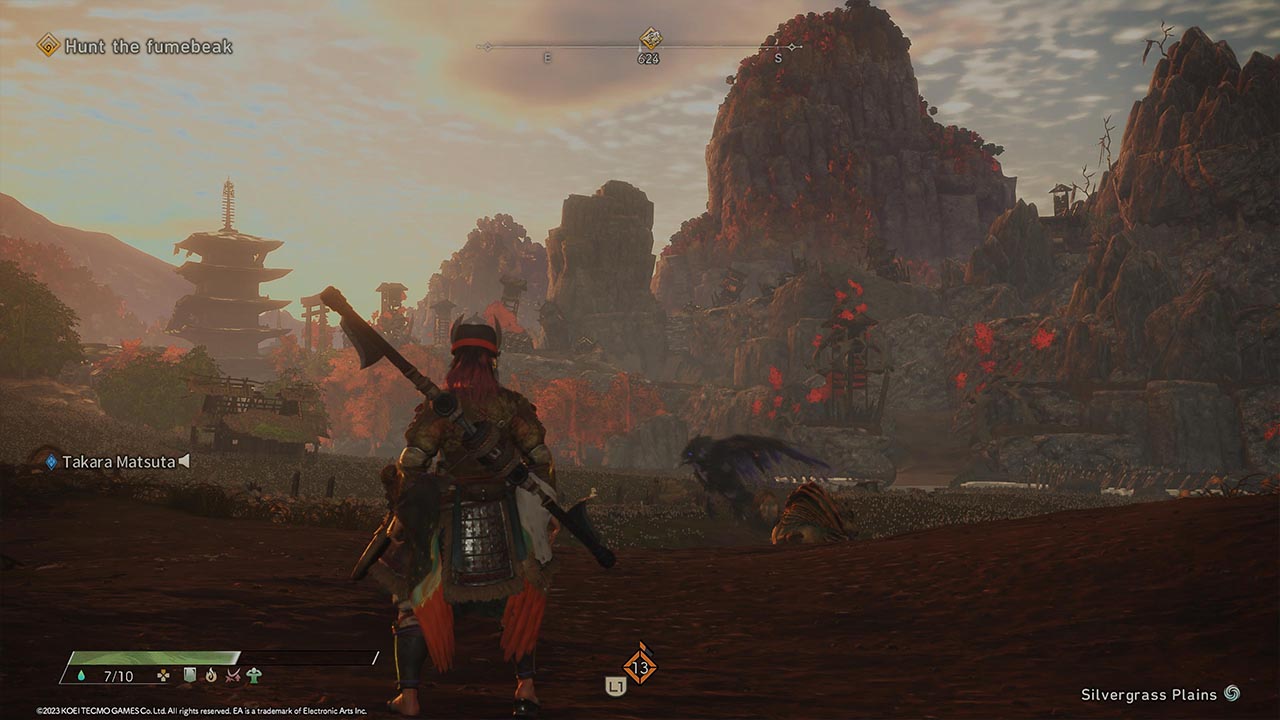
The world of Wild Hearts is filled with dangerous and beautiful creatures.
You play as a fully customisable hunter, building your character up in a robust creation system that lets you tweak everything from hair curls to pronouns. You are then set loose into a post-war, feudal-Japan inspired fantasy land known as Azuma. This is a land ravaged and broken by conflict, both physically and ideologically— an early game conversation muses on the shifting needs of the nation, the balance of nature and, most crucially to Wild Hearts, the role of a hunter in a world on the verge of a rebirth. It’s a fascinating thread that runs through much of the game’s main questline as you form a small found family of political and social refugees, all of whom rely on your hunting as much as your friendship. You’re often prompted to choose from several dialogue options, largely flavour text but charming enough to warrant a laugh every now and again too. Wild Hearts rarely surprised me with its narrative but there are flourishes throughout that speak to the game’s good-hearted approach.
Operating out of the game’s aesthetically pleasing but slightly empty hub city, Minato, your hunter will take on quests that send them out across several large but discreet locations. These are open zones as opposed to worlds, opting out of scale but relishing in authored spaces that perfectly complement the game’s myriad traversal and combat mechanics. Wild Hearts presents a world enamoured and entrenched in fantastical technology, combining the grit and tactility of the Feudal era with a variety of magical machinery. The headline concept is the delightful Karakuri, an ancient magic that allows its user to weave the threads of cosmic energy that binds matter into intricate wooden creations in a matter of seconds. Strapped to your left arm and activated by holding down the left bumper, you will raise your hand and warp reality into all sorts of contraptions, from basic blocks and spring boards, to gliders and map-spanning grapples and even cartoonishly large traps and offensive tools.
These are a wildly creative additions to the formula, riffing on player expression and genre staples effortlessly. The Karakuri is powered by Threads, an upgradable resource pool fuelled by the genuinely adorable in-world companion character, Tsukumo. This little rolling ball of wonder is Wild Hearts’ answer to Star Wars’ BB-8, an all-in-one unit who can attack, distract and heal you during combat as well as provide endless serotonin with its little chime noises and customisable appearance and name. You’ll find dozens of errant Tsukumo around the world, each one granting a point toward upgrading its overall capabilities and, in turn, the amount of Thread you can pull from for your Karakuri.
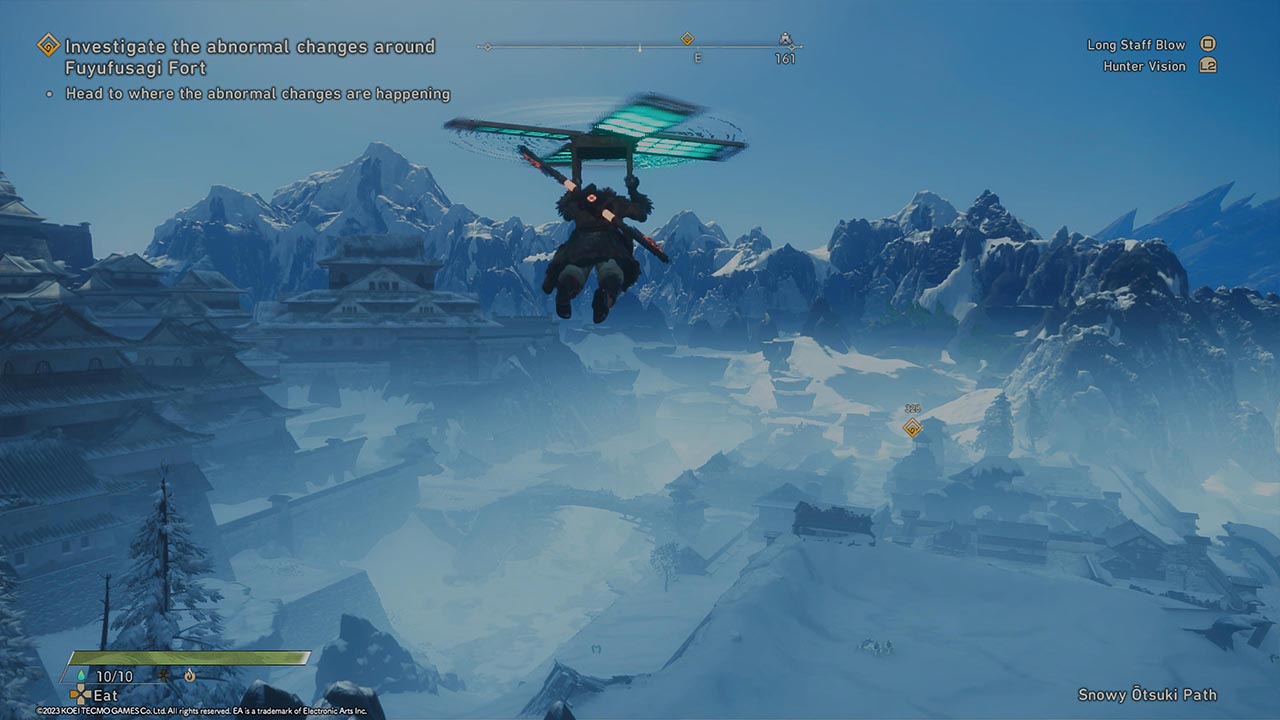
The Karakuri give you many ways to traverse and engage with the world
You’ll quickly settle into Wild Hearts’ rhythm, a smooth and satisfying loop of exploration, creation and eventual combat. Arriving at a location you’ll be dropped at basecamp, maybe whip up a crafting station for your armour and weapons, before likely dropping a hunting tower that will scan a portion of the map for your prey. From here, you’re largely free to decide how you approach your adventure. Littered through the map are Dragon Pits, world wounds that can be healed to increase the complexity of the Karakuri you can craft in any given area. Maybe you nab them all and craft an elaborate series of Rube Goldberg machines to conquer the map. Find a nice spot and erect a little home, complete with tent for fast travel and a variety of practical and ornamental accoutrements. You’re just as welcome to minimise your footprint, taking only what you need from the land and leaving it as untouched as possible, settling for a couple of strategic travel points and the occasional ledge averting box spring.
It’s a form of player expression equalled by Wild Hearts’ stellar action gameplay, which itself offers an impressive range of options in the form of weapons, armour and, of course, monsters. Koei Tecmo writ large has a fascinating relationship with genre leaders, most notably in its Nioh series which presented itself as a viable alternative to the then booming Soulsborne sub-genre of action titles. That same drive to not only emulate but iterate roars to life again in Wild Hearts, a game that fundamentally understands the mechanical space into which it is entering and purposefully veers off course with fantastic results. Wild Hearts is fast, shunning the slower pace of Monster Hunter but retaining the methodical inputs, and in doing so creating something unique that lands comfortably between FromSoftware and Capcom’s behemoth.
Combat is a fluid experience that encourages the use of the full set of tools available to you. At a base level, your light, heavy and special attacks are in tight rotation with the dodge roll and jump, both of which rely on an alarmingly small stamina bar. It can be punishing but only ever as a means of teaching— Wild Hearts doesn’t want you button mashing, despite its speed and flashy attack animations. Karakuri add another reactive element to combat, allowing for offensive and defensive conjuring, often at a moment’s notice (which the game thankfully introduces in slow-motion sequences, one of a dozen examples of how Wild Hearts does a great job of onboarding players). Pre-battle considerations are also present, with a simple tap of the d-pad bringing up your assorted collected food items that can be quickly consumed for buffs to health and defence.
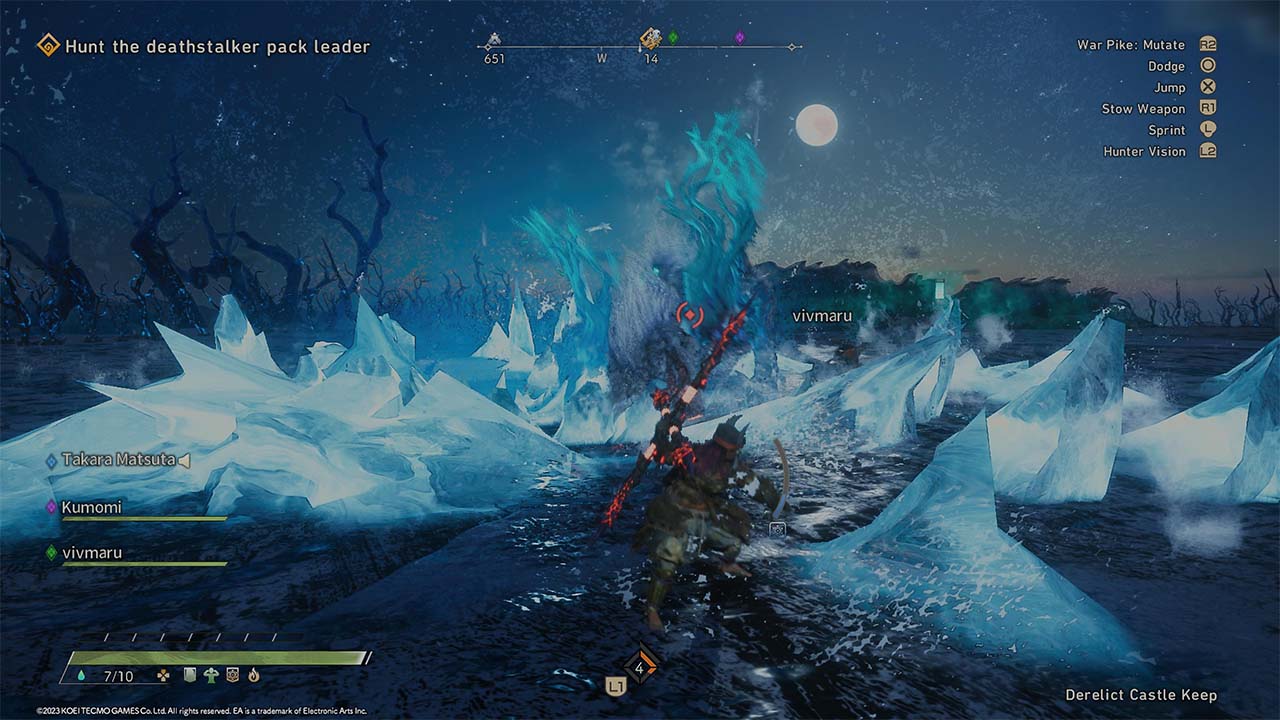
Kemono encounters are flashy and fun
The core combat gameplay feels as good as it does because Wild Hearts understands the very human appeal of a really cool, kinda ridiculous weapon. You begin the game with a standard set of swords and hammers but soon you’ll unlock an expanded set of exaggerated and extremely fun tools to take on your hunt. I kicked off with the Bladed Wagasa, an umbrella weapon whose audacious design is matched only by its ability to counter every attack thrown at it (imagine a giant monkey throwing a ball of lava your way and casually breaking through it with the spin of a parasol and you’ll understand its appeal immediately).
Eventually I upgraded to the Karakuri Staff, a complicated but immensely gratifying weapon that showcases Wild Hearts’ penchant for altered weapon states à la Bloodborne. Deal enough damage and you can switch into a new mode of attack, the katana becomes a bladed whip for example. Hunts yield monster parts and various materials that can be used to forge richly detailed armour sets and upgrade your chosen weapon. Both of these paths are dense and surprisingly lengthy, running well into post-campaign territory for the best upgrades and flashiest pieces. It’s also one of the few times I felt overwhelmed by the information on screen, the game doing an okay job at explaining it once, but by hour 20 I could have used a better means of understanding the complexities of these upgrades.
These interlocking systems are plentiful but never to the point of saturation, with the exception of the weapon upgrade paths maybe. And while the game is inviting and eager to teach, there’s no two ways around just how hard an experience it can be. There are a few ways players can massage the difficulty; the previously mentioned food buffs help a lot, but you can also deploy elemental damage based on monster research, tweak your armour and weapons with relative ease and, most importantly, ask for help. Wild Hearts’ co-op multiplayer is relatively seamless, simply ping the monster on the map you want help with and your request is sent to one of the many hunter gates littering the map. Other players can interact with these gates and choose from a list of active requests, popping into each other’s worlds for the fight and, charmingly, even leaving their Karakuri contraptions behind.
It’s a lovely bit of connectivity, offering players a means of difficulty modification and a palpable sense of community in turn. Minato is often visited by travelling hunters who will hang out at the docks and ask you to join them in hunts. I can’t tell if these are using player builds from across the servers or not but frankly I’d rather not know, the feeling of digitised brotherhood lands, even if it’s just a magic trick by the developers. Solo hunters are never truly alone though as Azuma is overrun with an array of fascinating wildlife. Broadly speaking, Wild Hearts has an incredible grasp of art direction and design, with every detail of its world infused with style and texture (even when the actual textures are a little muddy). This is as good a time as any to note that Wild Hearts does have some optimisation issues, especially on PC. The PS5 version of the game features a very smooth performance mode but the HDR is rather janky as of writing this review. The developers have promised post-launch patches, along with several free content updates, so hopefully, the game will be tamed in time.
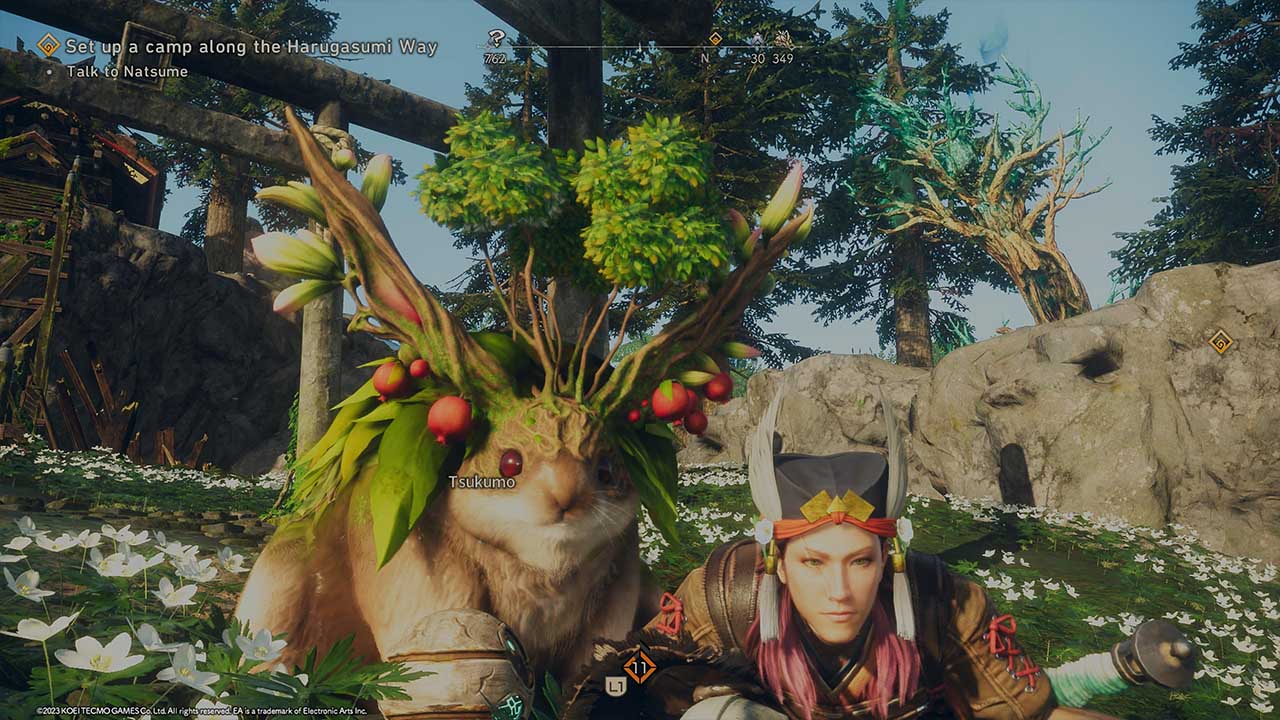
Don’t talk to me or my son ever again
Few things in the game inspire awe like the Kemono though, creatures big and small infused with and corrupted by magical, nature-based forces. If the Karakuri is the mechanical highlight of Wild Hearts, the Kemono are its beating heart. From friendly woodland creatures meandering by your camp to lethal wolves the size of a bus, the Kemono provide the player with a near endless supply of endearing, creative and engaging monster design. There are the occasional repeated base animals but the elemental magic afflicting them changes at least and the repetition, while disappointing, comes out in the wash of the overall experience. Much like FromSoftware’s line-up of foes, exactly which Kemono gives you the most trouble will vary greatly. An early game fight with an ape had others ready to punt a controller, I took him down in twenty minutes. Likewise, while other reviewers laughed off the rampaging chicken on the beach, I spent the better part of ninety-minutes wiping the sweat from my palms.
Aesthetically gorgeous, mechanically varied and just outright fun, the Kemono fights never ceased to give me something to smile about, be that in frustrated bemusement or sheer wonder. Equally though, Wild Hearts engages with violence as player language in a way I wish more games would attempt to— especially in this genre. While the big fights are unavoidable, most other Kemono can be treated peacefully. The joy I felt in sneaking up to a rather nasty looking toxic owl and being able to give him a little scratch behind the ear before he flew away, dropping his crafting materials, was tremendous. This calmer approach works in tandem with the game’s somewhat neat sidestepping of the often tragic invasive nature of the monster hunting premise. The Kemono are rarely an issue for the people of Azuma, the recent corruption being to blame for their aggression and push into human territory. In this way, you’re not tasked with violently claiming someone else’s land, this is your home, you’re just trying to restore its balance.
Final Thoughts
Through clever innovation and stellar design choices, Wild Hearts stakes its claim on the monster hunting genre with gusto. A serviceable story and some minor issues hold it back from true greatness, but the bones of this beast are mighty and point toward a bright future for Omega Force’s latest. With an emphasis on player expression and co-operative gameplay, Wild Hearts introduces us to a world rich with possibility and ripe for a sequel. I personally can’t wait to see where their heart takes them next.
Reviewed on PS5 // Review code supplied by publisher
Click here for more information on WellPlayed’s review policy and ethics

- Omega Force, EA Originals
- EA
- PS5 / Xbox Series X|S / PC
- February 16, 2023



One part pretentious academic and one part goofy dickhead, James is often found defending strange games and frowning at the popular ones, but he's happy to play just about everything in between. An unbridled love for FromSoftware's pantheon, a keen eye for vibes first experiences, and an insistence on the Oxford comma have marked his time in the industry.





